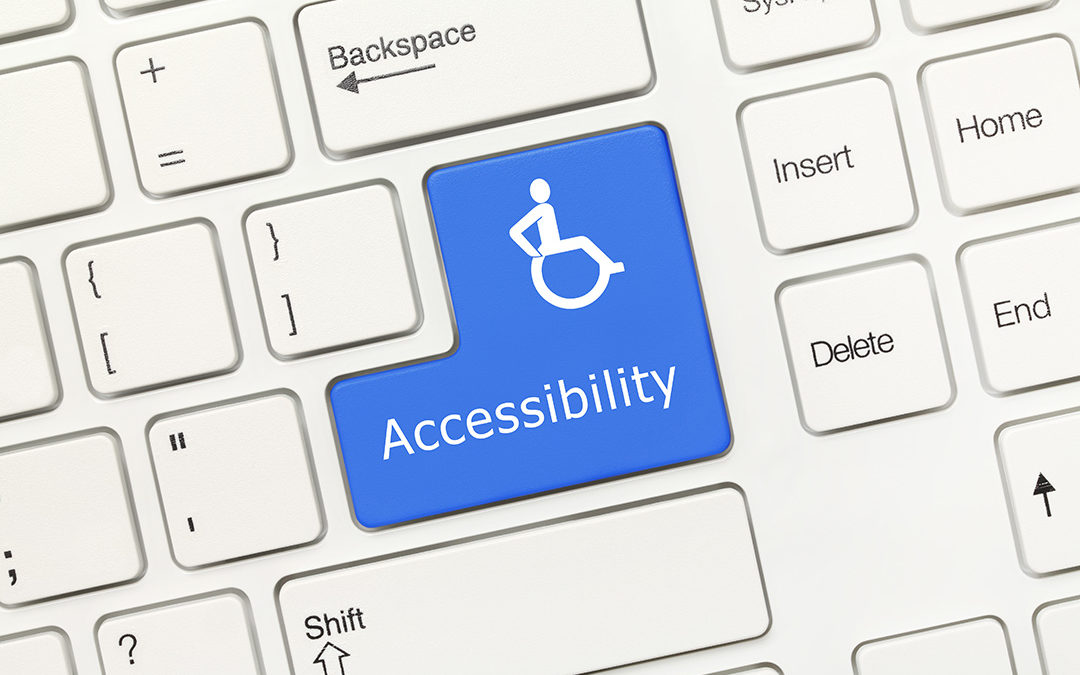In 1990, Congress passed the Americans with Disabilities Act. It was designed to prohibit discrimination based on disability and included accessibility requirements for public accommodations.
Because the internet has become such an important part of modern life, ADA-based principles have made their way to web design and usage standards, resulting in the creation of Website Content Accessibility Guidelines (WCAG 2.0). Websites that are WCAG 2.0 compliant can be easily accessed by people with disabilities, which now accounts for around 15 percent of the world’s population.
Making websites WCAG 2.0 compliant isn’t just smart from a business standpoint—after all, it increases your reach and makes it easier for potential clients to reach you—it’s also important from a legal standpoint. WCAG 2.0 compliance falls under two important laws: sections 504 and 508 of the Rehabilitation Act and the ADA.
When websites aren’t compliant with disability-related accessibility standards, the businesses that own or operate them can be sued by users for their failure to accommodate them. While those lawsuits, which are often class action in nature, can only seek injunctions and not monetary damage, they’re still something no business owner wants to face or experience.
What Does an Accessible Website Look Like?
A WCAG 2.0 compliant website generally looks no different than any other website you’ll use in your day-to-day browsing. That’s because most websites are already designed or have been redesigned to be accessible to people with disabilities.
In addition, many of the WCAG 2.0 requirements overlap with or correspond with sound design principles in general. That means many of the design philosophies and user experience choices we made when building or redesigning your website were already aligned with modern accessibility guidelines.
For example, design principles such as clear and easy to read text, color choices and contrast levels that are easy on the eyes, and websites that are functional and navigable with a variety of input devices, including mice, keyboards, voice input and recognition systems, and touchscreens, are just a few examples of good design and accessible design overlapping.
We’ve Got You Covered on WCAG 2.0 Compliance
As a business owner, the last thing you want is to do is potentially discriminate against new or existing clients or get slapped with a lawsuit for having an outdated and inaccessible website.
At BHC Group, we stay on top of all website design trends and requirements, and WCAG 2.0 compliance is no different. In addition to completing full audits of existing client websites, we also build out all new websites to be WCAG 2.0 compliant from the start. That means they’re easily accessible to people with a variety of disabilities.
The biggest change you may notice in your website after a WCAG 2.0 compliant design is a small, modified International Symbol of Access. This symbol indicates that your website is fully compliant with modern accessibility standards and can be safely and easily used by a much wider variety of potential clients. It is clickable and gives users options such as big text, contrast, read and more.
Got Questions? Call Us Today.
ADA compliance on the internet is relatively new, at least in terms of lawsuits adopting its guidelines and criteria on a large scale. If you want more information about it and how we’re making sure you’re compliant, call us at (615) 538-8254 or complete our contact form. We’re happy to answer your questions and address your concerns about WCAG 2.0 compliance and what it means for your website.


